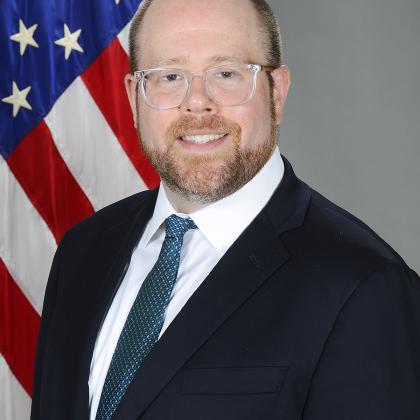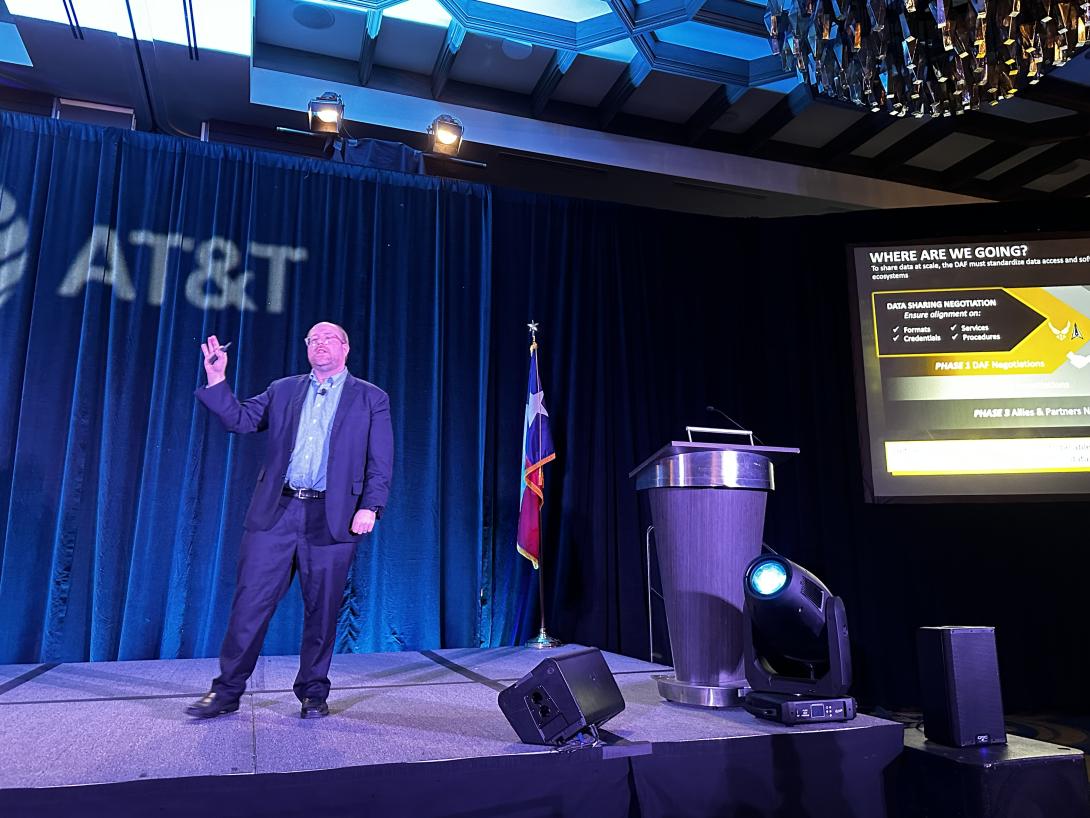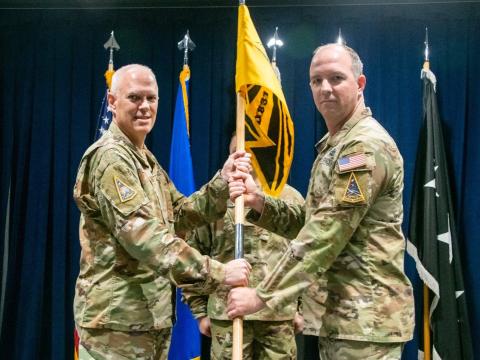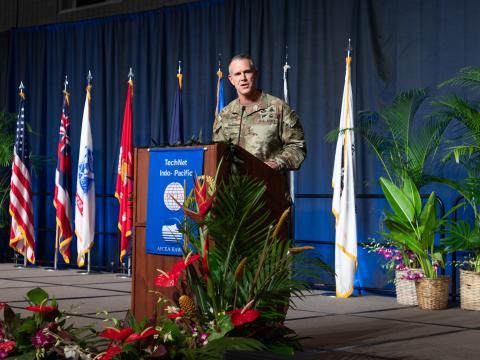The Air Force Navigates a Course for Standardized APIs
The U.S. Air Force’s goal to connect every sensor to shooter in coalition and joint force operations across all domains rests, at a basic level, on how computers or systems communicate with each other. That software intermediary, or application programming interface (API), allows components and applications to interact and share data.
It is necessary to adopt the standardization of APIs as a way to streamline software convergence and data access across the service, says the Air Force's chief technology officer, Jay Bonci. As such, the Department of the Air Force (DAF) is pursuing a robust API strategy, Bonci announced at the AFCEA Alamo ACE event on November 16 in San Antonio. At present, DAF systems cannot communicate together on a wide scale and share data in real time.
“APIs enable real-time, authoritative data sharing for coalition joint all-domain command and control (CJADC2) that ensures mission success on a global stage,” he explained.
In January, the DAF will open a comment period on the design principles of its API strategy. “We will be able to start to get public feedback, and that public feedback is for everybody in this community [across industry and the service] but also the [joint] community,” the CTO shared. “We want to make sure that we're aligned with DoD and aligned with our allies and partners.”

APIs enable real-time, authoritative data sharing for coalition joint all-domain command and control (CJADC2) that ensures mission success on a global stage.
The DAF’s bold “API-first” plan includes standardized tools rolled out over the next year, including API formats, credentialing, services and procedures. “We will have to provide a lot of services to make this work,” he said.
And while data platforms have been a cornerstone for the department, APIs are the necessary next step, he clarified. APIs incorporate some elements of both a data fabric and a data mesh and they present a standalone solution to allow DAF systems to communicate data in real time. Having a standardized API construct will help the DAF solve data sharing problems as well as enabling scalability, authoritative data sharing through governance and oversight and software interoperability.
“We have invested heavily in data platforms, and they very well serve our analysts and science community,” the CTO stated. “The platforms have built a huge amount of benefit for us. But that data is stale. We pipe that data in and it could be six hours, 12 hours or a month old. And when you're comparing data with different staleness, your results get less authoritative. But it's still a great model. It is still great for analysis that you don't need to do in real time.”
The military, especially the Air Force, given its technology and growing digital-centric environment, needs to face the adoption of calibrated APIs. Many of technology companies have addressed the streamlining of the software interface process. “Any sufficiently large tech organization has had to solve this challenge and they have had to develop these services. Your Microsofts, Amazon, Google, Teslas,” he offered. “It is a new area for us. We have to stretch to make our systems talk to each other to get to that JADC2.”
The Department @usairforce unveils its application programming interface (API) strategy to enable software convergence and data access, which will ultimately under pin CJADC2, says Jay Bonci, chief technology officer #AlamoACE2023 @AlamoAFCEA @AFCEA pic.twitter.com/aEuUo6iKtE
— Kimberly Underwood (@Kunderwood_SGNL) November 16, 2023
Several types of APIs exist—such as Rest API, created two decades ago, or WebSocket API. But they are not standardized, and the DAF needs a scalable, military solution.
Bonci also noted that the department will conduct software interoperability negotiations first within the service, then DoD-wide and ultimately with allies and partners. “To share data at scale the DAF must standardize data access and software interoperability negotiations without disrupting existing ecosystems,” he said.
The CTO sees the effort not only as a technical change but a social change. “We do have a lot of technical details to nail out,” he said. “But we're going to outline these types of principles in our reference architecture so that we can receive feedback from the community, both on the business relationship side for how system owners want to be able to control their data for what makes sense in a regulatory construct. And then what makes sense for your developers in technical ways.”
Presently, data sharing constructs are made ad-hoc and without guidance from the DAF. Bonci’ s hope is that the comprehensive API effort will put an end to that.
“In the next few months, we are going to be putting out more and more topics on these areas,” Bonci noted. “It's key for our data foundations. It's key for our software factories. It's key for the larger DAF software community, including our vendor partners. And it's going to be key for what our story is going to be for JADC2."




Comments